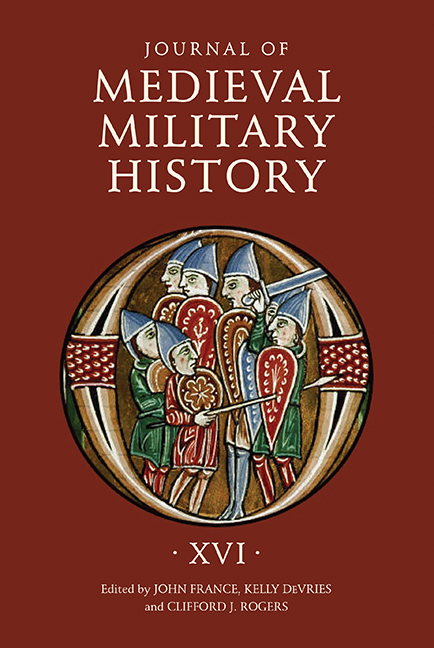Book contents
- Frontmatter
- Contents
- List of Illustrations
- 1 In the Field with Charlemagne, 791
- 2 The Recruitment of Freemen into the Carolingian Army, or, How Far May One Argue from Silence?
- 3 Baybars’ Strategy of War Against the Franks
- 4 Food, Famine, and Edward II's Military Failures
- 5 The Impacts of Warfare on Woodland Exploitation in Late Medieval Normandy (1364–1380): Royal Forests as Military Assets during the Hundred Years’ War
- 6 Exercises in Arms: the Physical and Mental Combat Training of Men-at-Arms in the Fourteenth and Fifteenth Centuries
- 7 The Skirmish: A Statistical Analysis of Minor Combats during the Hundred Years’ War, 1337–1453
- 8 Yron & Stele: Chivalric Ethos, Martial Pedagogy, Equipment, and Combat Technique in the Early Fourteenth-Century Middle English Version of Guy of Warwick
- 9 Reframing the Conversation on Medieval Military Strategy
- List of Contributors
- Journal of Medieval Military History 1477–545X
7 - The Skirmish: A Statistical Analysis of Minor Combats during the Hundred Years’ War, 1337–1453
Published online by Cambridge University Press: 09 October 2019
- Frontmatter
- Contents
- List of Illustrations
- 1 In the Field with Charlemagne, 791
- 2 The Recruitment of Freemen into the Carolingian Army, or, How Far May One Argue from Silence?
- 3 Baybars’ Strategy of War Against the Franks
- 4 Food, Famine, and Edward II's Military Failures
- 5 The Impacts of Warfare on Woodland Exploitation in Late Medieval Normandy (1364–1380): Royal Forests as Military Assets during the Hundred Years’ War
- 6 Exercises in Arms: the Physical and Mental Combat Training of Men-at-Arms in the Fourteenth and Fifteenth Centuries
- 7 The Skirmish: A Statistical Analysis of Minor Combats during the Hundred Years’ War, 1337–1453
- 8 Yron & Stele: Chivalric Ethos, Martial Pedagogy, Equipment, and Combat Technique in the Early Fourteenth-Century Middle English Version of Guy of Warwick
- 9 Reframing the Conversation on Medieval Military Strategy
- List of Contributors
- Journal of Medieval Military History 1477–545X
Summary
So many notable and perilous adventures have occurred, so many pitched battles and other deeds of arms and prowess, that he and all who've been with him in those battles and exploits … should be deemed and reputed worthy.
This study of the Hundred Years’ War is not concerned with individual battles. Instead the intent is to analyze those “notable and perilous adventures,” “other deeds of arms and prowess,” and “exploits” that the chroniclers found worthy of mention during the conflict between England and France. These small fights, which took place during battles, sieges, and campaigns of devastation, are skirmishes. Such skirmishes have an interesting story to tell because they impact the larger-scale instruments of strategy mentioned above.
In order to analyze the effects of skirmishes in the conduct of warfare during the Hundred Years’ War, it is first necessary to define the term “skirmish.” For the purpose of this study, a skirmish is a small fight, something between a battle and a duel, that is often, but not always, associated with a larger operation. Furthermore, a skirmish does not always take place in the ideal “open field,” but may be fought in any of a variety of locations and environments. For example, at least as much of the total fighting can take the form of smaller combats, including ambushes of foraging detachments, encounters between scouting parties, intermittent clashes of small groups of fighters at the barriers or assaults on walls during sieges – examples which one may not always envisage when one thinks of the term “skirmish.” And, while a skirmish could occur as a direct challenge (for instance in pursuit of battlefield honor), it more often took place as part of a larger operation. Thus, skirmishes affected the strategies of kings and dukes because victory and failure in these small encounters altered the operational picture of army movements. Therefore it is important to understand these smaller actions if we want to understand why armies were organized as they were, which soldiers were most valuable and why, and why the tides of war flowed in different directions at different times.
- Type
- Chapter
- Information
- Journal of Medieval Military History , pp. 123 - 158Publisher: Boydell & BrewerPrint publication year: 2018

